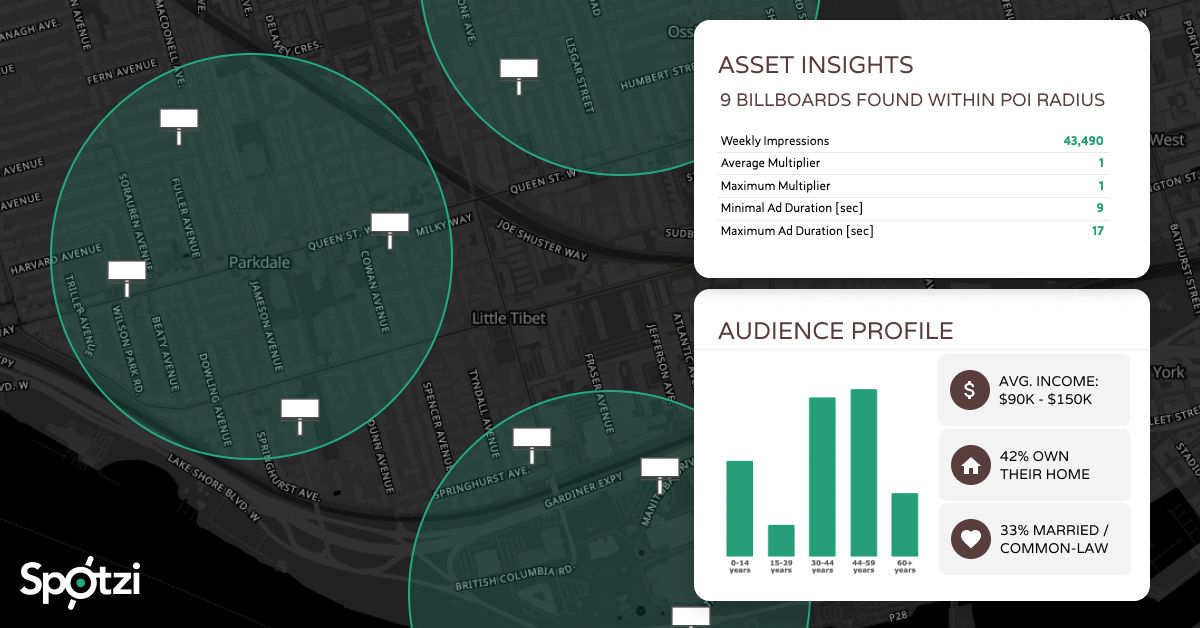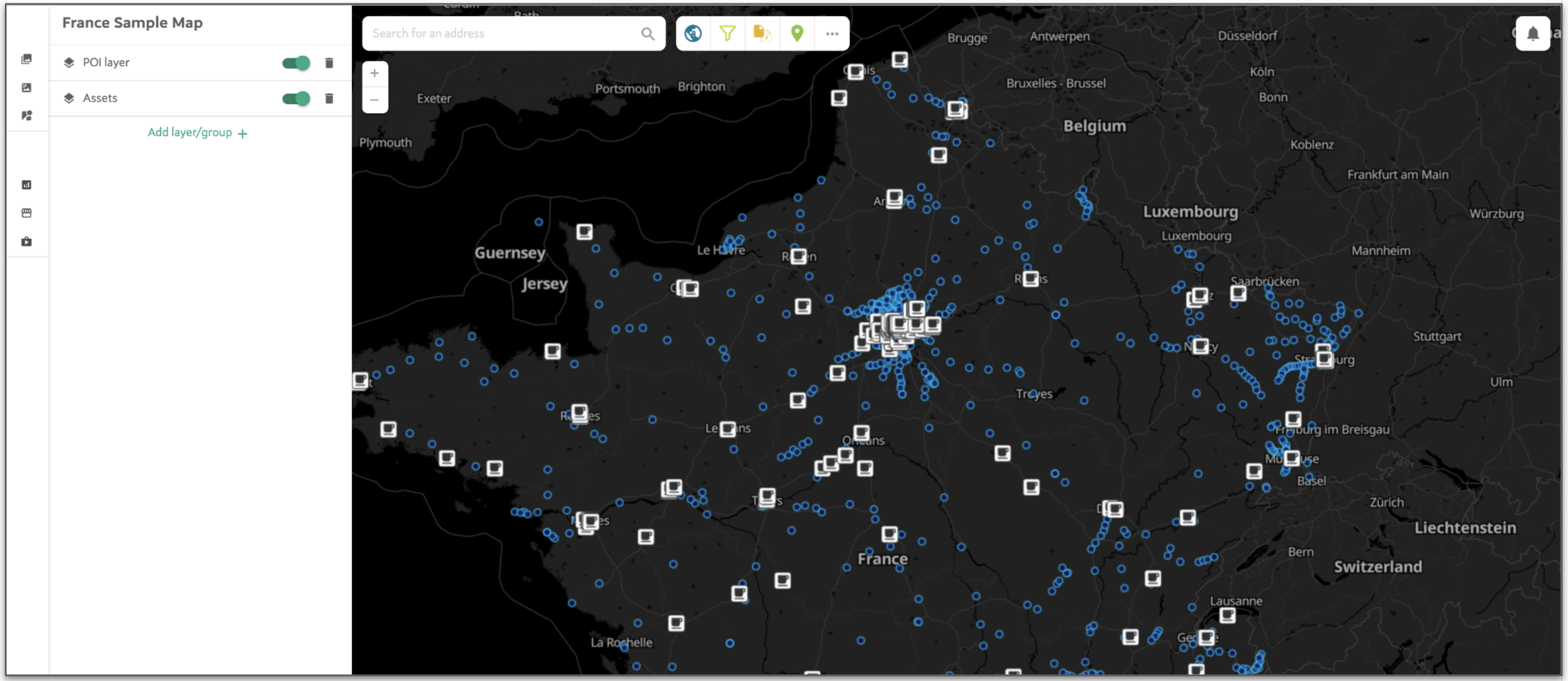 ICON
ICON
 ICON
ICON
Keeping company goals front of mind ensures that brands stay on the right track when it comes to sales, perception, and relevance. Your marketing strategy champions these goals — but so do those of competing brands.
Today's consumer is exposed to hundreds of deals and calls to action on a daily basis. What strategies can you turn to to get your brand front-and-center in the minds of your target audience? Geomarketing might be the key competitive advantage you've been looking for.

“But what is geomarketing?” you ask, “and how can I make sense of it in this sea of new terminology?”
Well, it’s really quite simple:
Marketing encompasses all the strategies which are aimed at helping your company achieve its goals.
The “Geo” in Geomarketing tells all when it comes to defining this specialized branch of marketing. Location data or awareness must be somehow utilized as a part of your GEO-marketing strategy. Geomarketing can also be referred to as Marketing Geography.
Keep reading to learn more about the types of geomarketing, various geomarketing applications, and the benefits of using location intelligence data in your next campaign strategy.
Location intelligence data — the driving force of geomarketing — can be used to reach people at the right place and the right time. This helps to maximize a campaign’s relevance and impact when it finally reaches your target audience.
Geomarketing strategies allow brands to target consumers right on their paths to purchase, or to ensure that marketing dollars are spent advertising to audiences within driving or walking distance of brick-and-mortar locations (which may otherwise be inaccessible to the receivers of more widely broadcasted ads).
Ultimately, geomarketing allows brands to meet their potential customer’s needs more effectively.
Geomarketing tools allow advertisers to target consumers based on their real-time locations, home locations, or historic locations — meaning people who have recently visited a region or venue. Geomarketing intelligence and insights can be used to:
Identify high concentrations of your target audience for optimally structured OOH campaigns.
Re-target audiences using a multi-channel marketing strategy.
Make changes to your campaign’s visual elements or offers based on location and surrounding audiences.
Successfully implementing location intelligence into your campaign’s strategy can improve a campaign’s response rate by up to 500%. In fact, 83% of location data buyers in the US said they experienced a higher response rate and greater customer engagement in their marketing and ad campaigns with the implementation of this data.
Our platform seeks to streamline the process of geomarketing research & analysis by providing you with a one-stop-shop for all of your mapping and location data needs.
The world of marketing geography and geomarketing analysis might seem intimidating at first. Geomarketing professionals such as Spotzi are always available to assist you in incorporating geomarketing intelligence into your social media, mobile advertising, or OOH campaigns for the first time. Let’s begin by breaking geomarketing down into its four main categories:

Geofencing is the use of geographic barriers to section off an area you’d like to target with your marketing efforts. This involves drawing a virtual ‘fence’ around an area of your choice.
A geofence can be used to capture mobile traffic data, gain insights into audience visitation, or to run targeted direct mail and mobile campaigns. You can also use a geofence to trigger notifications or messaging across mobile devices.

While geofencing is simply drawing a virtual fence around a particular geographic location, geotargeting involves using various types of location intelligence (often in tandem with geofencing) to locate and target your best-fit customers.

Geoconquesting can be used to target a competitor’s client base with your own deals and offers. This involves the use of aforementioned geofences around competing brick-and-mortar locations. These strategically placed geofences can allow you to target competitor’s clients with content aimed at consumer conversion while your customer retention strategy remains focused on your own existing client base.
Beacons allow brands to precisely target audiences using bluetooth technology. These small, physical devices can be placed in restaurants or retail locations in order to receive location data from any nearby mobile device. This geomarketing tool does come with certain disadvantages; they must be secured and closely monitored, and are reliant on good cell reception and the bluetooth activation on nearby devices.
Now that you're up to speed on the types of geomarketing — and what they entail — it's time to apply marketing geography to your real-world campaign and business strategies. Here are a few ways that geomarketing intelligence can be used to drive your brand forward.

Understanding the geographic factors in ecommerce or retail marketing can be particularly useful for increasing foot traffic to your physical storefront. Incorporating these into your advertising strategy is also beneficial to businesses which sell a product or service that is often bought on-the-go. For example: if your brand is based in Hawaii — and you don't offer shipping to any other part of the U.S — then you'd want to ensure that your marketing targets the residential and visiting populations of Hawaii.

Geomarketing platforms such as Spotzi can be used to locate the areas within a city or country that offer the greatest OOH potential for campaign exposure to your target audience.
Geomarketing research and audience mobility data can be used to determine:

Geomarketing tools allow users to analyze and re-target store visitors and OOH audiences — both those residing in proximity to an OOH asset, and those who simply viewed a campaign as a passerby.
Spotzi's movement data can be combined with extensive demographic and consumer behaviour datasets. These providing actionable insights into any audience or customer base, and allow users to re-targeted audiences using Google or Facebook Ad campaigns.

Expansion can be a costly gamble; its success greatly relies on ensuring that you're prepared for the needs and desires of the populations within the market you're diving into.
Geomarketing intelligence can fill in the blanks of your market research by allowing you to profile the residents and visitors of any geographic area. This research can then be used to compare markets, as well as to view market trends over time.
Brands can turn to geomarketing intelligence in order to: